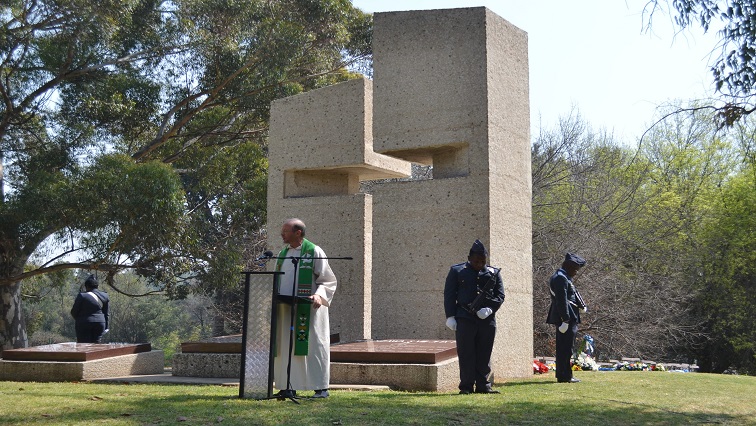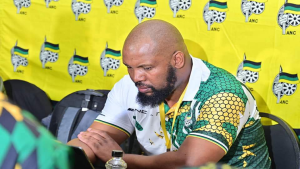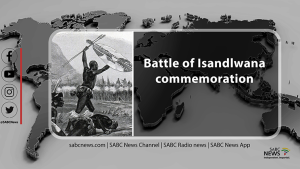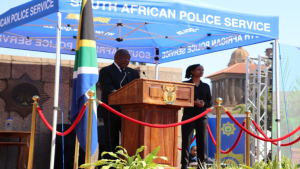The bravery and sacrifice of those who participated in the Warsaw Uprising and Relief Flights to Poland in the closing stages of World War ll have been commemorated at the Katyn Memorial in Melrose, Johannesburg.
Speaking at the 79th commemoration service, the Polish Ambassador to South Africa, Adam Burakowski, set the scene by describing the situation his country was facing. He said the war started on the 1st of September 1939 when Germany attacked Poland from the west in alliance with the Soviet Union, which attacked Poland from the east a few weeks later. By 1944, the Germans were on the defensive and the Red Army (which had joined the Allies after the German invasion of the Soviet Union in June 1941) was advancing in eastern Poland.
Outlining the dire situation facing his country around 80 years ago, Burakowski noted: ’On 1 August, 1944, the people of Warsaw started their uprising against overwhelming German forces. Poles were looking for assistance in various places – one of them was South Africa. The South African Air Force (SAAF) had already contributed to the war, but this time under Brigadier Jimmy Durrant they started the flights to help the people of Warsaw.’
He explained: ’At this moment because the Soviet Union remembered its first pact with Germany, it helped Germany once again. The Soviet Union did not allow the South African Air Force to land in its territory. So the SAAF pilots had to fly from Italy and return there. It was not only a long journey (about three-thousand-200 kilometres in total), they also had to fly low when they dropped the supplies, so the aircraft were an easy target for German anti-aircraft gunners. That was why the losses were tremendous, we owe them glory. They dropped around 500 000 containers which helped the people of Warsaw a lot.’
Pastor Robin Peterson who officiated at the memorial service was the son-in-law of Bryan Jones, one of the South Africans who flew to Warsaw. Jones was a navigator with the SAAF’s 31 (heavy bomber) Squadron. On the 13th of August 1944, his Liberator aircraft was shot down over Warsaw and Bryan and his crew became POWs until the end of the war.
Peterson outlined the huge challenges they faced. ’It was a chilling, frightening and impossible mission… which commentators have called the most daring aviation feat in the history of war. Flying thousands of miles over enemy territory; at the outer limits of the aircraft’s range; avoiding night fighters, anti-aircraft fire and then descending to 200 meters with full flaps over a fiercely burning, heavily defended city to drop desperately needed supplies.’
Petersen stressed they had no idea of the people they were assisting or their struggles: ’The people whose history and language they do not know, whose bravery and courage and rising up in resistance, they will only learn of much later. They do not know of the 42 000 combatants of the Polish Home Army, who with ammunition for only two-and-a-half thousand have taken on the might of the German army. They go – but many of them do not return.’
The cost to the South Africans of the six-week long airlift was high. Eighty of the graves in the Allied Airmen’s cemetery in Krakow, southern Poland are South African. 31 and 34 squadrons of the South African Air Force – all volunteers – flew 41 sorties to drop supplies to the Polish Home Army in Warsaw between 13 August and 16 October 1944: 11 aircraft were lost. Besides the SAAF, the 1586 Polish Special Duties Flight, the Royal Air Force, the Royal Canadian Air Force, the Royal Australian Air Force and United States Army Air Forces were involved in the Warsaw Airlift.
Burakowski added that another example of the friendship South Africa showed Poland, was when it received a few hundred orphans – Polish children who escaped from the Soviet death camps in Siberia. They were provided with accommodation in Oudtshoorn in the Western Cape. A reunion with their descendants to mark the 80th anniversary of their arrival is set to be held there from 22 to 25 September.
The Katyn Memorial was erected in 1981 to commemorate the Katyn Forest Massacre, in which 14,500 Polish officers and citizens were executed on the orders of the leader of the Soviet Union, Joseph Stalin, in 1940. It was the first memorial outside Poland to this event.
The memorial service can be viewed on the Warsaw Flights Facebook Page:






